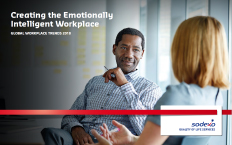Creating the Emotionally Intelligent Workplace
Our lives are a kaleidoscope of up to 500 emotional experiences per day. We may only be conscious of a fraction of them at any one time, but they color every interaction.
With this understanding comes a recognition of the need to navigate these emotions in the workplace, meaning that emotional intelligence (EI) has become a core skill set for high-performing organizations and outstanding leaders today.
Decades of research support the importance of “soft skills,” but EI matters now more than ever. This article discusses the drivers that have pushed this measure of intelligence to the forefront, and describes how organizations are boosting their collective EI—from recruiting the right talent to better assessing and teaching EI.
But there’s another side to the emotional intelligence story. It’s increasingly understood that the workplace and its many touchpoints play a key role in allowing people to bring their full spectrum of emotions to work. For organizations looking for a place to start, practices such as experience design can help uncover workforce needs and motivations, as well as identify ways to enhance the employee journey.
With insights from psychologist Daniel Goleman and Professor Cary Cooper of Manchester Business School, this article takes a deep dive into emotional intelligence, which is fast becoming a highly sought-out employee skill set and an important facet of a well-designed, human-centric workplace.
If you would like to receive the individual Global Workplace Trends 2018 as they are released, please follow this link:
To go further
About the 2018 Global Workplace Trends
Every year, Sodexo looks at the main factors affecting the world’s workers and employers now — and in the future. These trends resonate across the spectrum of employee experience and can serve as a useful tool for employers navigating a landscape that is ever evolving.










